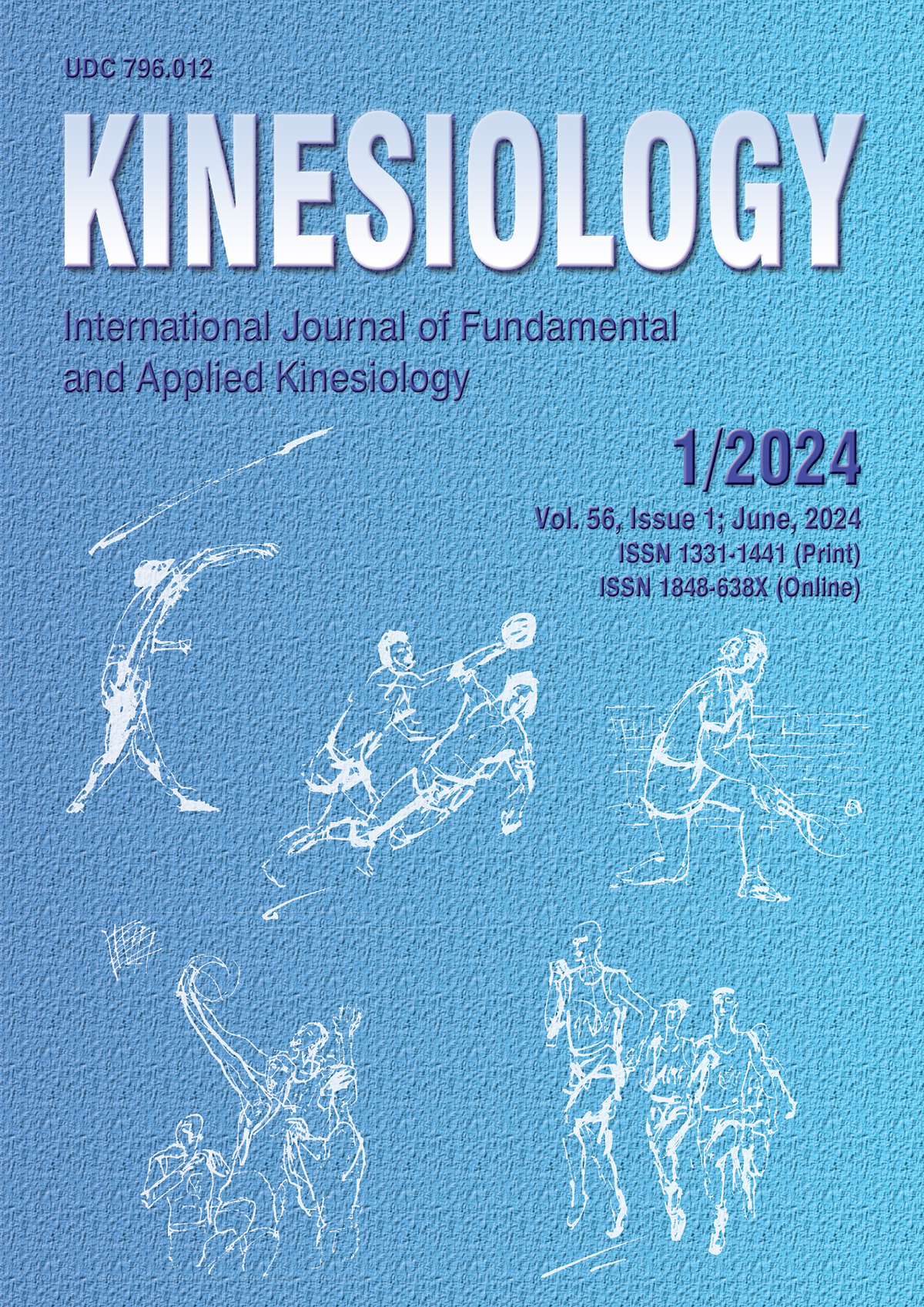STRATEGIES FOR A SELF-SELECTED UNANTICIPATED CHANGE OF DIRECTION MANEUVER AND THE RISK FOR ACL INJURY: FINDINGS FROM HAIE STUDY
Keywords:
Knee moment, knee flexion, cutting maneuver, strategies, anterior cruciate ligamentAbstract
The purpose of the study was twofold: 1) to qualitatively investigate the different change of direction (COD) strategies used by females in an ecological situation; and 2) to evaluate the knee internal adduction moment and knee flexion during the first 30% of support as risk factors for anterior cruciate ligament (ACL) injury during these strategies. Ninety-four females, classified in ACTIVE and NON-ACTIVE groups performed five trials of a COD maneuver that were subsequently qualitatively evaluated. Kinematic and ground reaction force data were analyzed in the first 30% of support. To assess differences between strategies, we used a two-way repeated measures analysis of variance. Four strategies of 45° COD maneuvers were found. The different strategies involved either a cross-over with the right or left leg or had no cross-over. The statistical analysis revealed significant differences with a lesser knee internal adduction moment (p<.05) and a greater knee flexion angle during the strategies with a cross-over of the right foot compared to the other strategies (p<.05). Therefore, it is important to consider the potential effect of different strategies on ACL injury risk factors, as ACL injury risk factors may vary depending on the specific directional technique used.
Keywords: knee moment, knee flexion, change of direction, COD strategies, anterior cruciate ligament
Downloads
Published
Issue
Section
License

This work is licensed under a Creative Commons Attribution-NonCommercial 4.0 International License.
At Faculty of Kinesiology we recognize that access to quality research is vital to the scientific community and beyond. Kinesiology is non-profit journal and all costs of publishing and peer review process are covered by the publisher itself or other funding sources like Ministry of Science and Education of the Republic of Croatia. Full text papers are also available free of charge at http://hrcak.srce.hr/kineziologija. There are no restrictions on self archiving of any form of paper (preprint, postprint and publisher's version).
Articles are distributed under the terms of the CC BY - NC 4.0
Kinesiology does not charge any fees to authors to submit or publish articles in our journal.


